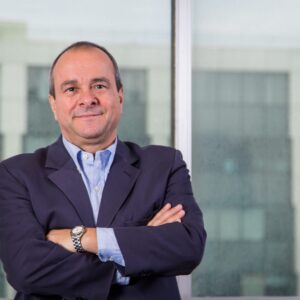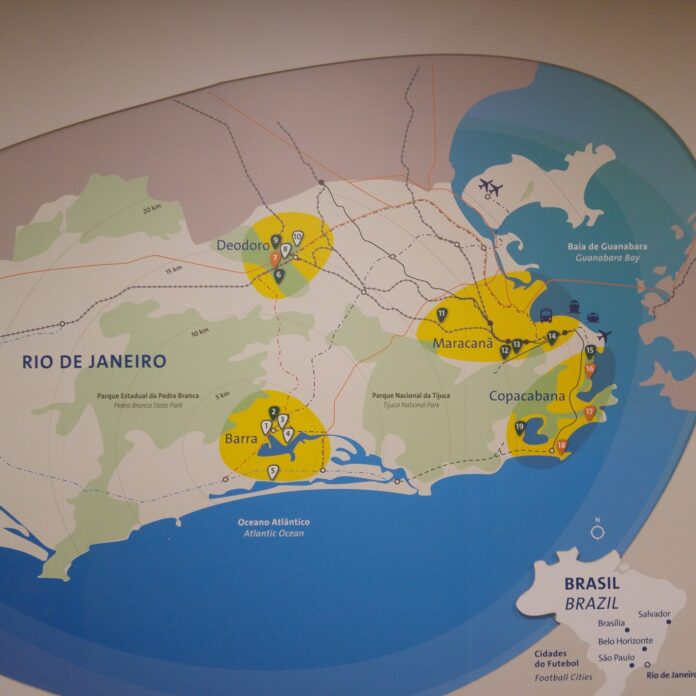RIO DE JANEIRO – Two years after Brazil hosted the 2014 Fifa World Cup, the city of Rio de Janeiro will host the first Olympic and Paralympic Games to take place in South America. The Olympic Village will house around 17,000 participating athletes, and the Brazilian federal government forecasts 350,000 to 500,000 foreign tourists will visit the city for the Rio Olympics.
The flow of the people into and around the city will impact mobile carriers whose networks will see beyond normal demand for mobile data. According to several experts interviewed by RCR Wireless News for a special series on the Rio Olympics (check all stories here), increased use of over-the-top applications such as WhatsApp, Twitter, Snapchat and Facebook to share high-quality pictures and videos instantly can cause numerous bandwidth challenges.
Inside the 37 venues, as well as in different places around the city, people will expect to have easy access to mobile data on their smart devices. Major Brazilian mobile telecom operators Vivo, Oi, TIM and Claro said they expect a massive use of data services during the Games.
To better understand what would be required in terms of network expansion and capacity enhancements, telecom operators studied the Games’ venues and surveyed the city locations that could demand more data traffic. With that information in hand, carriers planned their infrastructure deployments to include new antennas to boost the current capacity at mobile cell sites. This option is favored to increase capacity in venues; telecom providers have together implemented dedicated coverage using distributed antennas systems to boost the 3G and 4G networks in select venues.
“It is important to remember that each site has a different characteristic that needs to be considered in the solution,” Andre Luis Ituassú, Oi’s director for mobile investment, coordination and planning, said. “Places such as Copacabana Arena, where the New Year’s Eve celebration takes place, already has a vast coverage planned [for] large events. In contrast, the Olympic Park area is a totally new region, so we are installing new equipment permanently to maintain coverage and service even after the Olympics.” Last June, Oi has filed the largest bankruptcy request in the country’s history, after failing to reach an agreement with creditors.
The Rio Olympics also will use some legacy systems from the World Cup. In some of the cases, carriers in a consortium implemented dedicated indoor systems – antennas and mobile access equipment – via DAS deployments in stadiums, which is needed in terms of coverage and capacity due to the high concentration of users on event days.

Greater responsibility
As one of the Rio Olympics sponsors, America Movil is responsible for delivering telecommunication services through its three companies – Embratel, Claro and NET. Deployments include 8,000 Wi-Fi hot spots in competition venues, athletes’ village and headquarters. Most of the hot spots will be for private use by those who are directly involved with the Games, such as employees, athletes and coaches, among others.
In addition, NET has deployed public Wi-Fi in some large competition zones, such as Deodoro and Barra da Tijuca. The Wi-Fi infrastructure also will be used to offload mobile data traffic from Claro’s customers and from around 20,000 members of the Olympic family who received a Samsung smartphone and a Claro SIMcard.
“These will be the most connected Olympic Games in history,” claimed Luciano Carino, head of America Movil for the Rio 2016 event. Carino said America Movil’s team used the U.S.-based Super Bowl as benchmark to size its infrastructure to support thousands of accesses simultaneously.
“We believe there’ll be around 25,000 people connected at the same time posting on social media,” he noted. “During the opening ceremony it will be even higher, with 70,000 people connecting their devices and willing to upload photos and videos.” The ceremony will take place on the evening of Friday Aug. 5 in the Maracanã Stadium. Carino forecasts data traffic during Rio 2016 will be four times that used in London 2012.
America Movil’s mobile unit Claro is using a combination of technologies to meet data demand. It has deployed small cells, femtocells in some venues, the previously mentioned Wi-Fi and DAS, and mobile cell sites to reinforce coverage in selected venues.
Network improvements
“We believe this is the first major world event with a broad use of 4G. The technology should be used in 70% of connections (30% in 3G). Although 4G was already available in London 2012, the adoption rate was less than 30%,” said Marco Di Costanzo, engineering director at TIM Brasil. He agrees with America Movil’s Carino in predicting the traffic data volume to be four times higher.
Costanzo said TIM expects the high data consumption to happen all over the city. Therefore, the Brazilian unit of Telecom Italia has worked to enhance its coverage by taking into account the urban mobility and focusing on improving the LTE experience. TIM is using 1,200 4G radio base stations, 70% of those using the frequency band of 1.8 GHz. “The 1800 MHz allows us to provide a better indoor and outdoor coverage,” he said. TIM also has 1,000 radio base stations for 3G.
TIM has tapped small cells to enhance its coverage in the Porto Maravilha area (check out a video interview about Porto Maravilha legacy project) to minimize the visual impact in architecture. In the Deodoro competition zone, TIM used its so-called biosites – cellular antennas shaped like a lamppost – designed to accommodate 3G and 4G transmission equipment.
TIM boosted its network infrastructure with an eye beyond the Olympics. “Our new antennas will continue after the Games. We will have some mobile cell towers to cover specific areas and venues, but the goal is to improve our coverage in Rio de Janeiro permanently.”
Vivo, which belongs to Spain’s Telefónica group, said it has increased the capacity of its network to make it compatible with “4.5G” technology characteristics, providing more data bandwidth to its customers.
“It will allow higher-speed data transmission and a richer experience for both video and connectivity to social networks,” Atila Araújo Branco, Vivo’s director of mobile engineering, noted. Vivo also expanded its mobile coverage in places it identified as being of greater interest in the city as well as in venues and in the Olympic family accommodation area.
The infrastructure comprises the installation of new 3G and 4G antennas in the city and the use of temporary and transportable infrastructure equipment to cover venues. “They are known as ‘fast sites,’ because they have a rapid implementation and dismantling, and low visual impact,” Branco said. In addition, Vivo invested to enhance the capacity of its transmission network – backbone and backhaul – to ensure the flow of additional traffic generated during the Games.
Counting 330,000 kilometers of optic fiber throughout Brazil, Oi provides data transport services to large companies, including other operators. “We expanded our backbone using optical transport networks 100 [gigabits per second] technology and enhanced the resilience of our network, which currently goes through three different circuits passing in 24 of the 27 Brazilian capitals,” said Oi’s Andre Luis Ituassú.
Ituassú said since the beginning of the year Oi has carried out about 300 reinforcing actions to enhance its mobile network in Rio de Janeiro, comprising activations of new sites and expansion of channeling 2G and 3G, as well as the modernization of 2G and 3G equipment. “Until the beginning of the Olympics [we] will have around 250 more actions done to improve our mobile network,” he added, noting that Oi will closely analyze its network during the Games.

International roaming
One of the major concerns when visiting a country is if your smartphone will properly work and how you will have access to telecom services. Less than a month out from the opening ceremony of the Rio Olympics, carriers said foreign visitors won’t face any problems.
Marco Di Costanzo said TIM Brasil increased its roaming contracts with international carriers. TIM owns 50 agreements on 4G and a larger number in 3G, he added, declining to reveal the telco partners’ names.
Vivo said it expanded 4G international roaming agreements to deliver better quality and Oi said it expects an increase of international roaming services during the Games.
Much bigger than the World Cup
The comparison with the World Cup is unavoidable: the Olympic and Paralympic Games are much bigger. The soccer competition had 32 countries compared to the 106 countries represented at the Rio Olympics. The footprint expansion is different, noted Pablo Mlikota, Syniverse’s president for the Americas region.
The company has been working with three local carriers he declined to name to prepare them for the increase in data traffic. “We are making sure they are connected to [Internetwork Packet Exchange]. We are working in the backbone to size the traffic.” The goal is to reduce the latency, since most of the traffic will be data and will be moved from and to Brazil. “80% of the traffic goes to the U.S.,” he noted.
Mlikota also pointed out differences between London 2012 and this year’s event. “There are more devices connected on LTE networks and the average data consumption per person is much higher.” He said he isn’t concerned about any particular application and noted foreign people should not face any trouble using devices in Brazilian networks. “We test almost all services; most the devices landed in Brazil should be covered.”
Since the World Cup, the number of Brazilians using 4G networks has increased. According to telecom regulator Anatel, in April there were 256.43 million mobile accesses, of which 34.88 million were LTE — Wideband Code Division Multiple Access calls for the majority with 143.67 million accesses.
“Oi was among 2014 World Cup sponsors. [On] that occasion the traffic routed was three times higher than that observed in the 2010 World Cup. Since Brazil’s World Cup the volume of 4G handsets in the country grew approximately 10 times,” said Oi’s Ituassú.
According to Fifa, 5.16 million people attended its World Cup fan fests in Brazil, with Rio de Janeiro’s Copacabana site attracting 937,330, the highest number in any individual city. The attendance for the 64 matches totaled 3.43 million people, the highest recorded at any World Cup since USA 1994, with an average crowd of 53,592, which was also a record.
Click here for more stories about the 2016 Rio Olympics.
Editor’s note: This story is part of a series focused on the technology deployments that support the Rio Olympics.

